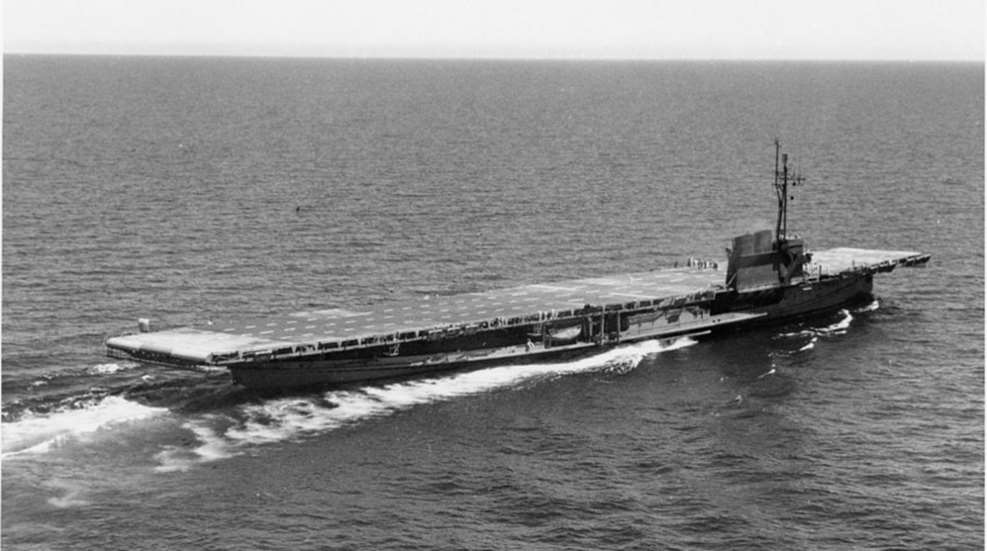
One of the most intriguing yet little-known stories of World War II occurred not overseas but rather right in the American heartland—on Lake Michigan, just off the Chicago shoreline.
Following the Japanese bombing of Pearl Harbor in Hawaii on December 7, 1941, the United States immediately entered the war. And one of the most urgent needs of the U.S. military, among many, was to quickly train thousands of fighter pilots headed for the Pacific theater. What the young, inexperienced flyboys needed to learn were not only basic aeronautics and combat skills, but also how to take off and land on aircraft carriers.
The problem was that to train on carriers cruising the world’s oceans during a time of war was risky business. The last thing an inexperienced pilot needed was to be looking over his shoulder for enemy planes while attempting to land on a small flight deck surrounded by miles of open water. The ingenious answer to that dilemma was to train on the Great Lakes. But how? U.S. aircraft carriers were too massive to access the Great Lakes, and to build one on any of the Five Sisters would take too long.
Instead, two ships, the USS Wolverine and USS Sable—both former coal-fired, side-wheel passenger steamers—were converted into makeshift aircraft carriers. From 1942 to 1945, more than 15,000 U.S. Navy airmen and Marines were trained to take off and land on the “flattops.” Flying rugged and powerful Dauntlesses, Wildcats, Hellcats, Corsairs, Avengers and SNJs (the Navy’s basic trainer), the pilots had to make eight successful takeoffs and landings to become CQ (meaning carrier qualified). Some of the better pilots qualified in under an hour and a half, but it often wasn’t that easy. The flight decks were under 600 feet long (less than the length of two football fields) and only 85 feet wide. Real carrier decks at the time measured more than 800 feet in length.
Described as a “controlled crash,” a carrier landing is one of the most difficult and dangerous maneuvers a pilot will ever undertake. Lake Michigan is known for building rough seas during high winds—resulting in a severely pitching deck—but that didn’t seem to matter to the flight instructors. Pilot training continued seven days per week, year round, in all types of weather--and pilots were expected to adapt to the changing conditions. For instance, during winter they had to deal with snow squalls; during spring and fall with waterspouts, which are essentially small tornadoes that form over large bodies of water. One sailor recalled seeing no fewer than seven waterspouts churning at once within 3 miles of the ships, a grave danger to planes in the air.
Deck crews also had to be on their toes. If, for instance, any of the eight arresting wires stretched across the deck to catch the “hook” of a landing aircraft snapped, it could decapitate a sailor. There were also fires to put out following crashes and, with so much noise and confusion on the flight deck, the threat of a crewman inadvertently stepping into the path of a whirling propeller was very real.
Not surprisingly, not all the pilots landed safely. Between 130 to 150 crashes occurred, the airplanes often plunging into Lake Michigan and sinking to the bottom of the lake. As a result, pilots were injured and eight were killed. Yet this intense and accelerated training program is credited with ultimately changing the course of World War II in the Pacific.
Following the war, the Wolverine and Sable, both ships having served their purpose well, were decommissioned and sold for scrap. But the aircraft resting at the bottom of Lake Michigan—more than 100 crippled Navy war birds—were not forgotten. Well preserved in the cold, deep, freshwater of the lake, attempts are being made to retrieve them. About 40 of the fighter aircraft have been recovered so far, some raised from as deep as hundreds of feet below the surface. Many have been fully restored and are on display today at aircraft museums and airports throughout America. Three of the more well-known locations include the National Museum of Naval Aviation in Pensacola, Florida, and O’Hare and Midway airports in Chicago, Illinois.
Many of the pilots who trained on Lake Michigan were just out of high school, still in their late teens. One of those men was 18-year-old George H.W. Bush, at the time one of the youngest aviators in the U.S. Navy. Bush qualified aboard the Sable, would later be shot down in combat, survive, and go on to become America’s 41st President.






































